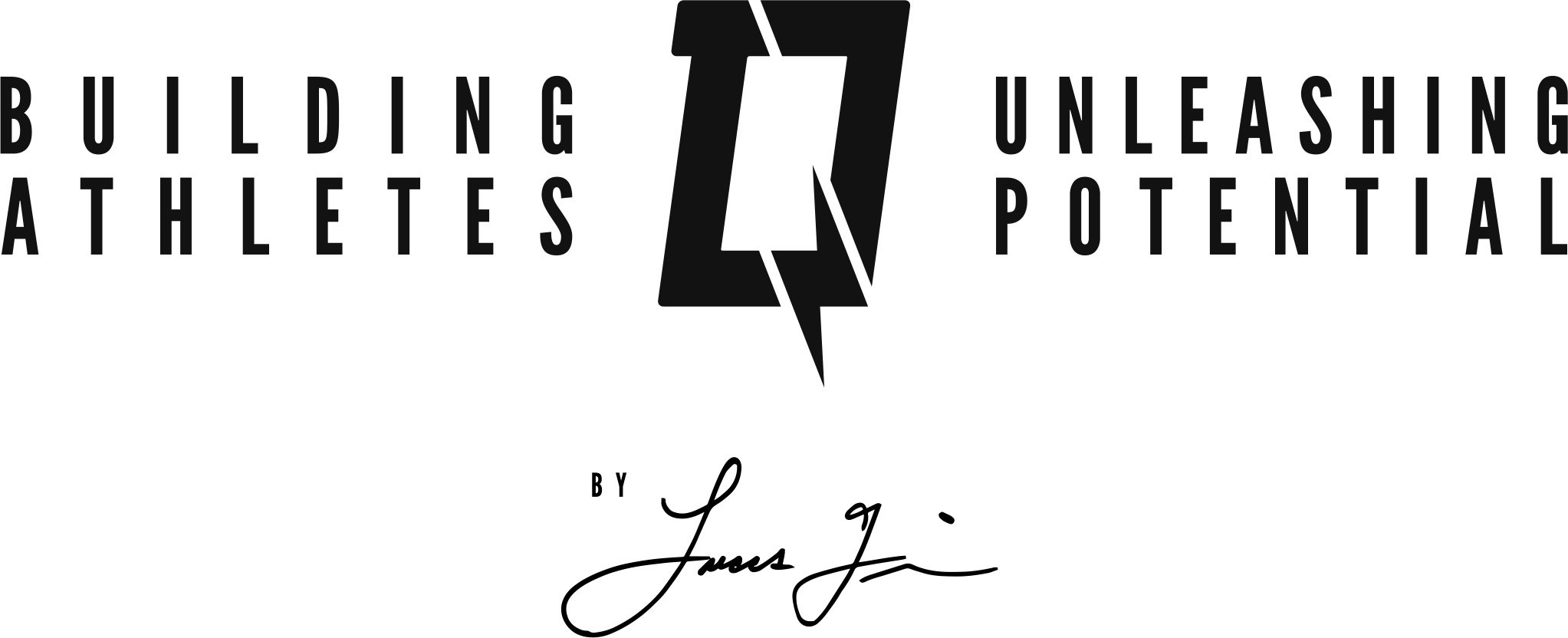AGILITY & CHANGE OF DIRECTION
Often the determining factor between playing and not playing. Can the athlete react, cut, and change direction with balance, quickness, and explosiveness?
Overview on how I train my athletes to improve Agility and COD--
Change of Direction & Agility Training Components:
Biomechanical & Perceptual-Cognitive things to consider:
Trunk positioning & orientation of the athlete’s body leading into deceleration.
Subsequent orientation of the athlete’s body leading into a reacceleration.
Lowering of the center of mass & increasing knee flexion upon changing direction.
Increased braking impulse and propulsive impulse (Strength exercises).
Visual focus, anticipation, decision making, pattern recognition, knowledge of situation.
Evasive drills and small-sided games with sport-specific stimuli.
Leg action (avoiding stiff-legged braking) and cueing “pushing the ground away” upon reacceleration.
Powerful arm action that is not counterproductive to body positioning.
Strength development strategies, including an emphasis on eccentric strength due to large braking forces during change of direction.
RFD, reactive strength, and fast and slow stretch-shortening cycle activities (Speed-Strength qualities on the force-velocity curve).
Logical progressions from change of direction capacity building (pre-planned change of direction tasks) to perceptive-cognitive stressed change of direction tasks for improved agility.
For a more in-depth view on my philosophy regarding Agility training, see below.
A distinction needs to be made regarding the difference between “change of direction” and “agility” when it comes to performance enhancement. Change of direction is defined as the physical capacity of an athlete to change direction while decelerating and then reaccelerating (DeWeese & Nimphius, 2016). Agility, on the other hand, must involve a reaction to a stimulus in combination with changing direction (often called perception-action coupling). Further, DeWeese and Nimphius add, “The physical capacity to change direction may be a component of agility, but the perceptual-cognitive component influences the physical demands of agility (522).” Why is this important? This is important due to the fact that an athlete is not necessarily improving his or her agility for their sport simply by running around cones or an obstacle course of cones and hurdles and is therefore improving their agility. Simply and arbitrarily setting up cones and having athletes perform “fast feet” cutting or rounding around cones does very little to improve the agility of the athlete. One must understand the perception-action coupling component of agility and therefore incorporate meaningful decision-making or decisive reaction that correlates to successful agility performance of an athlete’s sport to have any chance at improving that athlete’s agility. DeWeese and Nimphius put it plainly and clearly when they write, “Training athletes for effective agility performance requires knowledge of perceptual-cognitive demands over and above the neurophysiological requirements for changing direction. Not only are the perceptual-cognitive demands on athletes related to their abilities in the areas of visual search scanning, anticipation, decision making, and reaction time, but also the tactical situation (offensive vs. defensive) changes the brain processing strategy required” (527). Further, Nimphius adds this in the work Advanced Strength and Conditioning: An Evidence-based Approach, edited by Anthony Turner and Paul Comfort:
The decisions that occur in response to a defensive shift, open space or one-on-one scenario in sport require individuals to combine perceptual-cognitive factors (visual scanning, anticipation, pattern recognition, knowledge of situation, reaction time) with a motor response, which in combination can be termed perceptual-motor ability. As such, perceptual-cognitive skill is a function of perception and understanding, while ultimately what one is able to perceive and do with action is what allows for successful execution. This circling requirement back to motor response is why the process for understanding and developing COD and agility has started with the motor or physical capacities to ensure a base is present to build from. Such a concept is supported by research demonstrating that although one may make a correct decision (perceptual-motor decision), if they are less skilled they may fail to execute this decision despite making the correct one in the context of the situation (298, bold added).
Thus, there is a necessity in developing change of direction capacity through pre-planned, non-reactive change of direction drills so as to improve the ability of an athlete to physically change direction. Therefore, in my programming for my athletes in the development of COD and agility, there is a logical progression from pre-planned COD actions that evolve into reactive agility drills involving perception-action couplings and contextual interference.
Moreover, developing strength on a single-leg basis has tremendous transfer to agility and change of direction. Cutting and changing direction at top speed requires significant braking forces (often on one leg), and therefore significant single-leg strength of the athlete. Developing first the ability to decelerate is critical to not only agility and change of direction but also for reducing the risk of injury. The key to decelerating is eccentric strength—training to improve eccentric strength has tremendous transfer to agility, change of direction, and reducing the risk of injury.
Athletes do NOT need “quick feet.” Athletes need the ability to apply great forces into the ground, at an appropriate angle and at the appropriate speed (often times less than 250ms), and also the ability to decelerate, which requires again, great eccentric strength. Aimless and asinine “quick feet” drills (often done in a “speed ladder”) are not the cure for slow feet—strength is the medicine that will lead to the cure for slow feet, imbalance, and lack of coordination.
References
Deweese, Brad & Nimphius, Sophia (2016). Essentials of Strength and Conditioning, 4th Edition. Program Design and Technique for Speed and Agility Training.
Turner, Anthony & Comfort, Paul (2018). Advanced Strength and Conditioning: An Evidence-Based Approach. Speed and Acceleration Training. 298.

